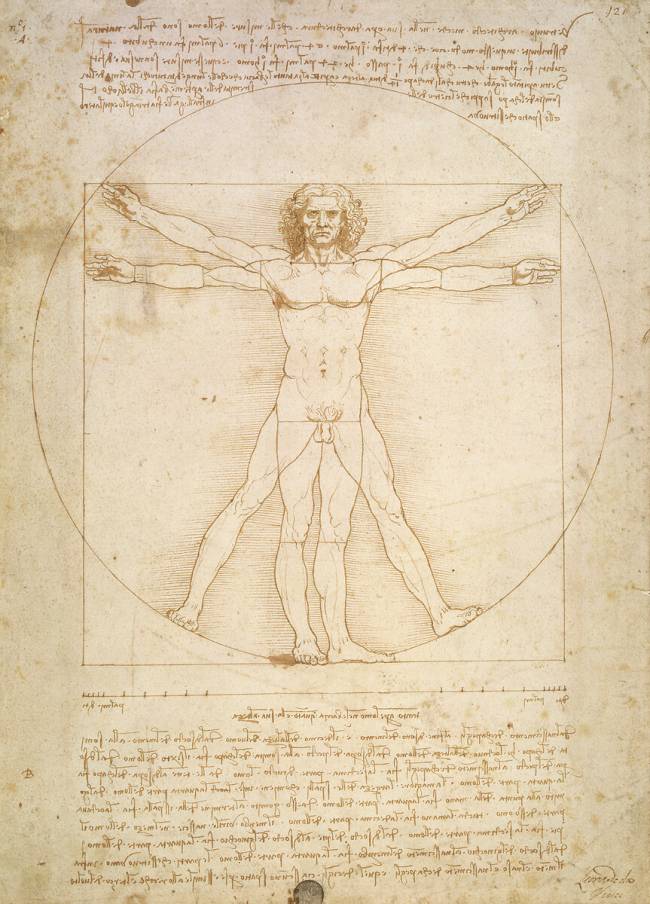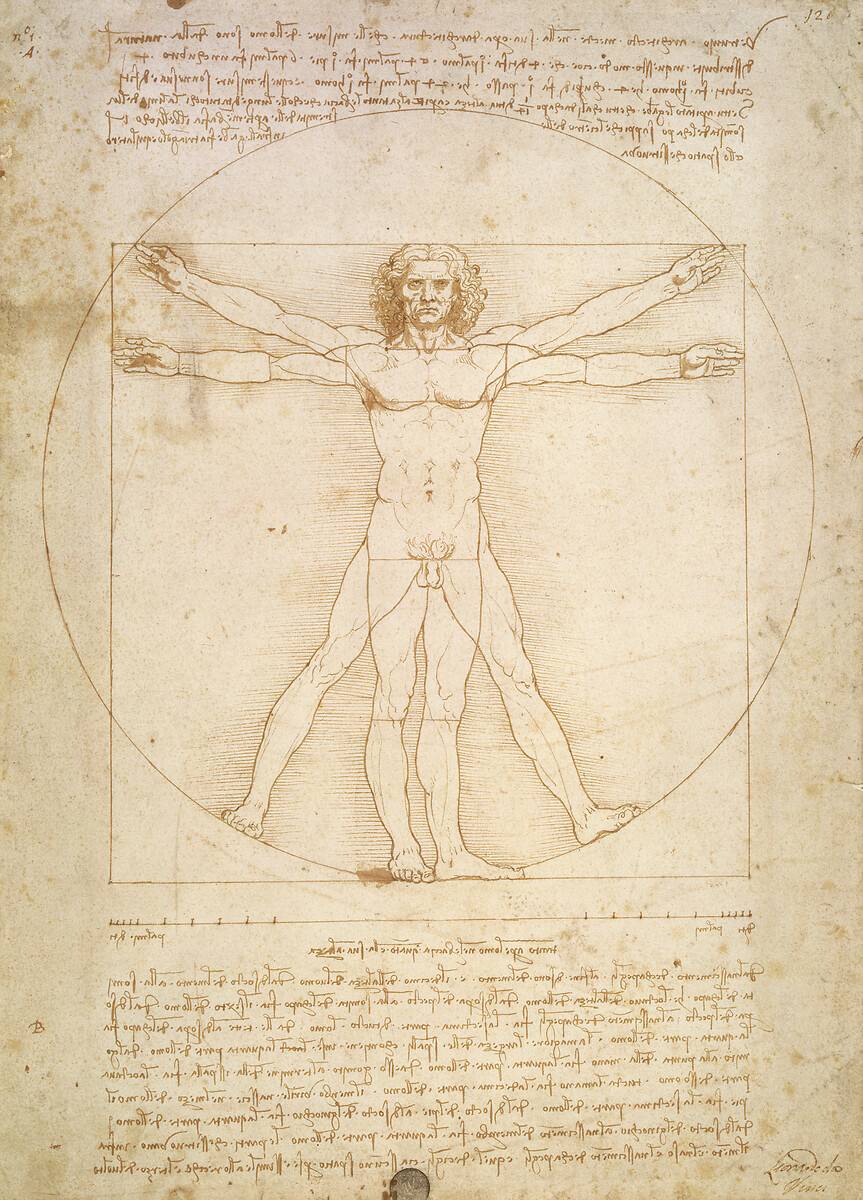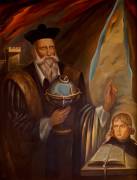Shop art print and framed art Vitruvian Man (Human proportions, 1490, according to Vitruvius) by Leonardo da Vinci
Customise
Your art print
Vitruvian Man (Human proportions, 1490,... OF Leonardo da Vinci
Vitruvian Man (Human proportions, 1490, according to Vitruvius)
Discovery of Leonardo da Vinci's Vitruvian Man
The iconic drawing of the Vitruvian Man, by the great Italian artist Leonardo da Vinci, represents a milestone in the evolution of the representation of the human body and has had a significant impact on the fields of art and anatomy.
The influence of the Roman architect Vitruvius
At the heart of Leonardo da Vinci's work is the influence of the Roman architect and engineer Vitruvius, who lived in the 1st century BC. Vitruvius is best known for his treatise De architectura, which establishes the principles of classical architecture and the proportion of buildings. One of the key ideas presented in this text is that of symmetry and the relationship between the different parts of the human body. It was from these ideas that Da Vinci developed his innovative drawing of the Vitruvian Man.
Perfect anatomy and ideal proportions
Leonardo da Vinci's quest to understand the human body
Throughout his career, Leonardo da Vinci showed a deep interest in the study of the human body and its proportions. He firmly believed that understanding anatomy was essential to correctly representing the body in art. As a result, he spent many hours dissecting cadavers to study the structure of muscles, bones and internal organs. It was thanks to this research that he was able to create his drawing of Vitruvian Man.
The idea of ideal proportions
One of Leonardo da Vinci's main concerns in his study of the human body was to discover the ideal proportions between the different parts of the body. Inspired by the ideas of Vitruvius, Da Vinci sought to establish precise mathematical relationships between limbs and joints. The result of this research is the drawing of Vitruvian Man, which demonstrates how the proportions of the body can be used to create a harmonious and balanced image.
The artistic genius of Leonardo da Vinci
Although the Vitruvian Man drawing is based on scientific and anatomical principles, it is also a remarkable example of Leonardo da Vinci's artistic talent. Indeed, several elements can be observed that demonstrate his creativity and technical mastery:
- The choice of composition: The drawing shows a naked man inscribed in both a circle and a square, two geometric shapes considered perfect by the ancient Greek philosophers. This arrangement highlights the idea of harmony between man and the universe.
- The precision of the line: Leonardo da Vinci is renowned for his extremely detailed and meticulous sketches. In Vitruvian Man, every element, from muscles to joints, is depicted with great accuracy, testifying to his in-depth knowledge of human anatomy.
- The mastery of modelling: This pictorial technique involves creating soft, subtle transitions between shadows and areas of light. It is found in Vitruvian Man, particularly in the modelling of the muscles and the way the light reflects off the body.
Impact and legacy of Vitruvian Man
The Vitruvian Man design had a considerable impact on several areas:
- In art: The notion of ideal proportions developed by Da Vinci influenced many Renaissance artists, who sought to represent the human body in a more realistic and harmonious way. Many works of art from this period illustrate this quest for perfection, such as Michelangelo's statue of David.
- In anatomy: Leonardo da Vinci's anatomical studies laid the foundations for a more precise understanding of the human body. His detailed sketches and observations gave doctors and scientists of the time a better understanding of the structure and function of internal organs.
This artwork is a drawing from the renaissance period. It belongs to the italian renaissance style.
« Vitruvian Man (Human proportions, 1490, according to Vitruvius) » is kept at Gallerie dell'Accademia, Venice, Italy.



































